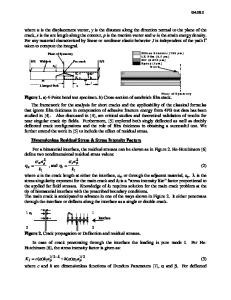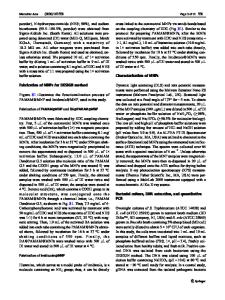A sample preparation method for four point bend adhesion studies
- PDF / 259,655 Bytes
- 4 Pages / 612 x 792 pts (letter) Page_size
- 56 Downloads / 324 Views
A method to prepare samples for four point bend testing is reported in this paper. The traditional method of sample preparation involves time-consuming steps of sawing with a diamond saw followed by polishing with fine grit to remove the roughness of the sidewall. The new method uses cleaving along the 〈100〉 crystallographic direction, which renders smooth surfaces and eliminates the polishing steps. Load–displacement curves comparing polished versus cleaved samples show that the new technique provides improved results. Elimination of fracture-inducing defects is the primary benefit of this method, which also leads to data with tighter distributions.
Interfacial delamination in devices using lowdielectric constant materials is an important reliability concern in the manufacture of advanced integrated circuits with copper interconnections. A mismatch of thermal expansion coefficients between adjacent layers in multilayer dielectric/metal stacks is the root cause of such failure. In addition, the shear stresses induced by processes such as chemical mechanical polishing, die sawing, and packaging can overcome cohesion between the individual films leading to catastrophic failure. Interfacial adhesion strength between the individual layers of a multilayer stack is therefore a parameter of prime importance. The adhesion strength between two layers is measured by the work done in separating a unit area of interface between the two films.1 The chemical nature of atomic bonds as well as the interface microstructure determines the cohesive strength of the discontinuity between the two layers. Though the interfacial adhesion strength may be calculated via complex computational techniques, mechanical methods such as the pull-off test, indentation test, scratch test, modified edge lift test, and four point bend test1–3 are easily implemented. The four point bend test can provide quantitative measurements of the critical or subcritical debonding energy (Gc) of interfaces and has widely been used in the adhesion studies of device packaging4 and Cu–barrier– dielectrics interfaces.5–7 Various aspects affecting the interface adhesion energy are also investigated, such as finite element analysis,8,9 patterned structures,10,11 fracture propagation,12 and film porosity.13 In practice, a
a)
Address all correspondence to this author. e-mail: [email protected] DOI: 10.1557/JMR.2004.0177 1324
http://journals.cambridge.org
J. Mater. Res., Vol. 19, No. 5, May 2004 Downloaded: 28 Mar 2015
load is applied to a sandwiched beam sample to bend at a rate of
Data Loading...










